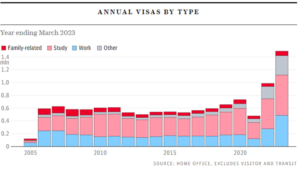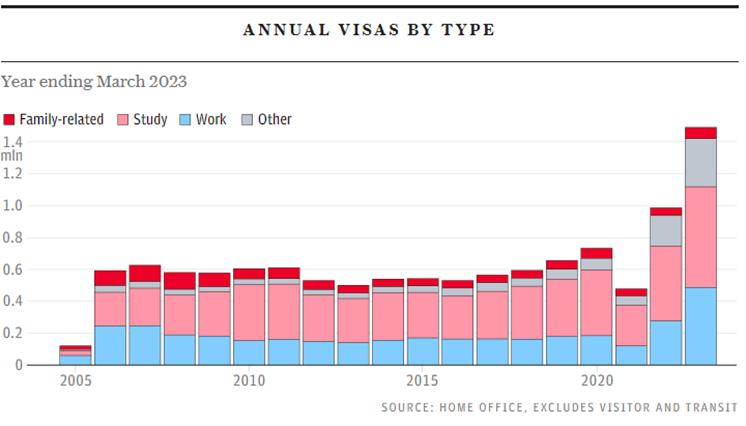Why is net migration so high?
With Brexit came a new immigration system – the new system lowered the skill and salary requirements for skilled worker visas allowing businesses to recruit into a wider range of jobs from abroad. The government also removed the requirement to test the local labour market before offering a job to an overseas applicant, simplifying the process for sponsoring overseas workers.
Shortly after the Covid pandemic hit, the government added a new subcategory to the skilled worker route – the Health and Care Worker visa. The aim of this route was to plug the skills gap in this sector, again allowing UK businesses to recruit people from overseas into vacancies (for care workers), who would previously have been ineligible for a work visa.
Of course, the ending of free movement between the UK and the EU had an impact. EEA and Swiss nationals (with the exception of Irish nationals) now wanting to come to the UK for work must have a visa. This change has forced EEA and Swiss nationals to apply for visas to be able to work in the UK.
These factors have undoubtedly led to an increase in recorded migration into the UK, both by the workers and their dependants.

Which sectors have seen the biggest increase?
NHS and care visas accounted for 43% of all work visas, with 101,447 issued to workers in 2022-2023. That represents a near trebling from 37,440 in just 1 year. From 1 January to March 2023, more than 40,000 people moved to the UK to work in care. In the previous year, this figure was an astonishing 113. Care workers and home carers made up 2/5 of those who have health and care worker visas. This visa is overwhelmingly represented by those from India, Nigeria, and the Philippines and applicants from Asia and Africa account for 96.3 per cent of all issued visas of this kind. Also high up the list of sectors that sponsor the most overseas workers includes the IT sector (programmers and IT and business analysts in particular featuring in the top 10 most sponsored roles). 
What does this mean for UK businesses in these sectors?
The statistics show that the new immigration system is working and routes such as the Health and Care Worker route are being widely used. However, there are still serious skills shortages in sectors like the healthcare sector in the UK, and this may be due to a lack of awareness of how the immigration system works. If you are a business working in the healthcare sector, get in touch. We can talk you through the immigration system and help you understand how it can work for you.
Sources: https://www.gov.uk/government/statistics/immigration-statistics-year-ending-september-2022/why-do-people-come-to-the-uk-to-work
https://www.telegraph.co.uk/politics/2023/05/11/net-migration-million-home-office-government-conservative/
https://www.telegraph.co.uk/politics/2023/05/25/migrant-crisis-graphs-that-tell-story/




